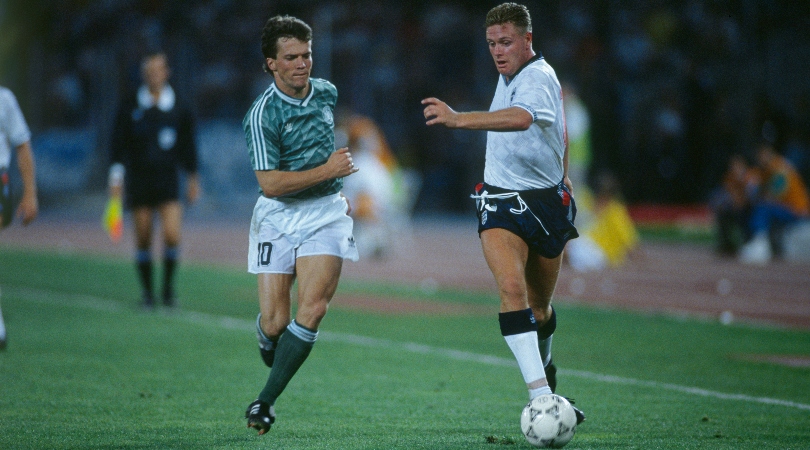
Football changed in the 1990s. The decade saw the European Cup revamped and the Champions League born. In the same season, the Premier League also replaced the old First Division in England.
Before all that, there was an entertaining World Cup in Italy, which was the last major tournament won by the old West Germany, a year after the fall of the Berlin wall.
Brazil and France also won World Cups in the 1990s and there was plenty of fantastic football throughout the decade. Here, a look at the best midfielders between 1990 and 1999...
35. Karel Poborsky

Karel Poborsky's lob against Portugal at Euro 96 was a thing of beauty and the Czech winger was Man of the Match in the final despite defeat against Germany at Wembley.
He was less consistent after moving to Manchester United that same summer, but a fine player nevertheless in the second half of the 1990s with the Czech Republic, Slavia Prague and later Benfica.
34. Enzo Francescoli
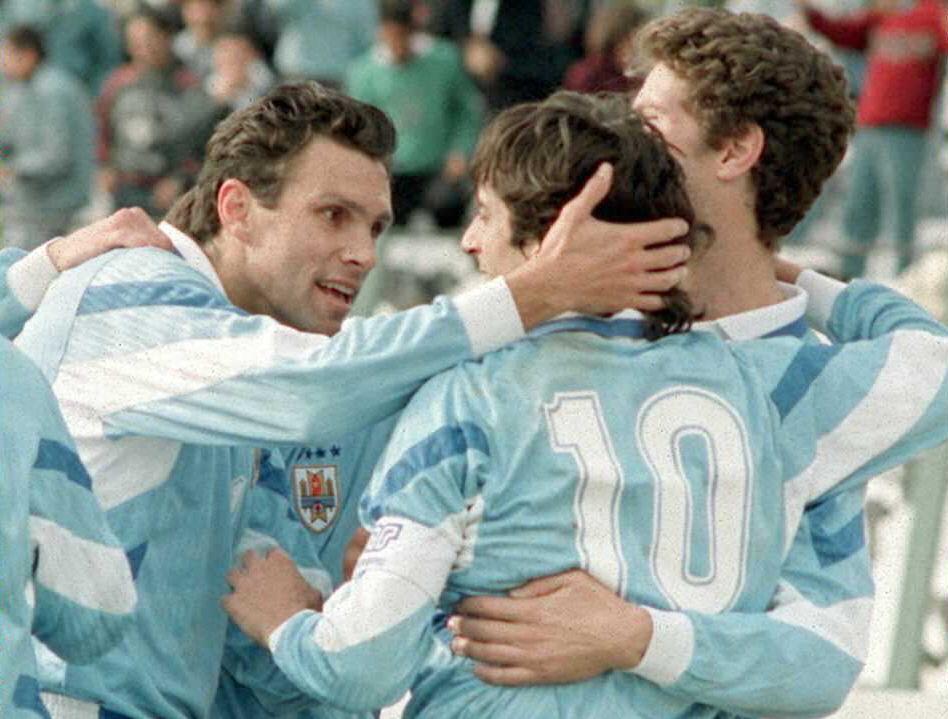
Enzo Francescoli played well into his 30s and continued to impress in the twilight of an extraordinary career.
The elegant playmaker helped Marseille to the semi-finals of the European Cup in 1990, before moving to Italy with Cagliari. Later, he led Uruguay to the Copa America (his third) in 1995 and won the Copa Libertadores the following year after an emotional return to River Plate.
33. Zvonimir Boban
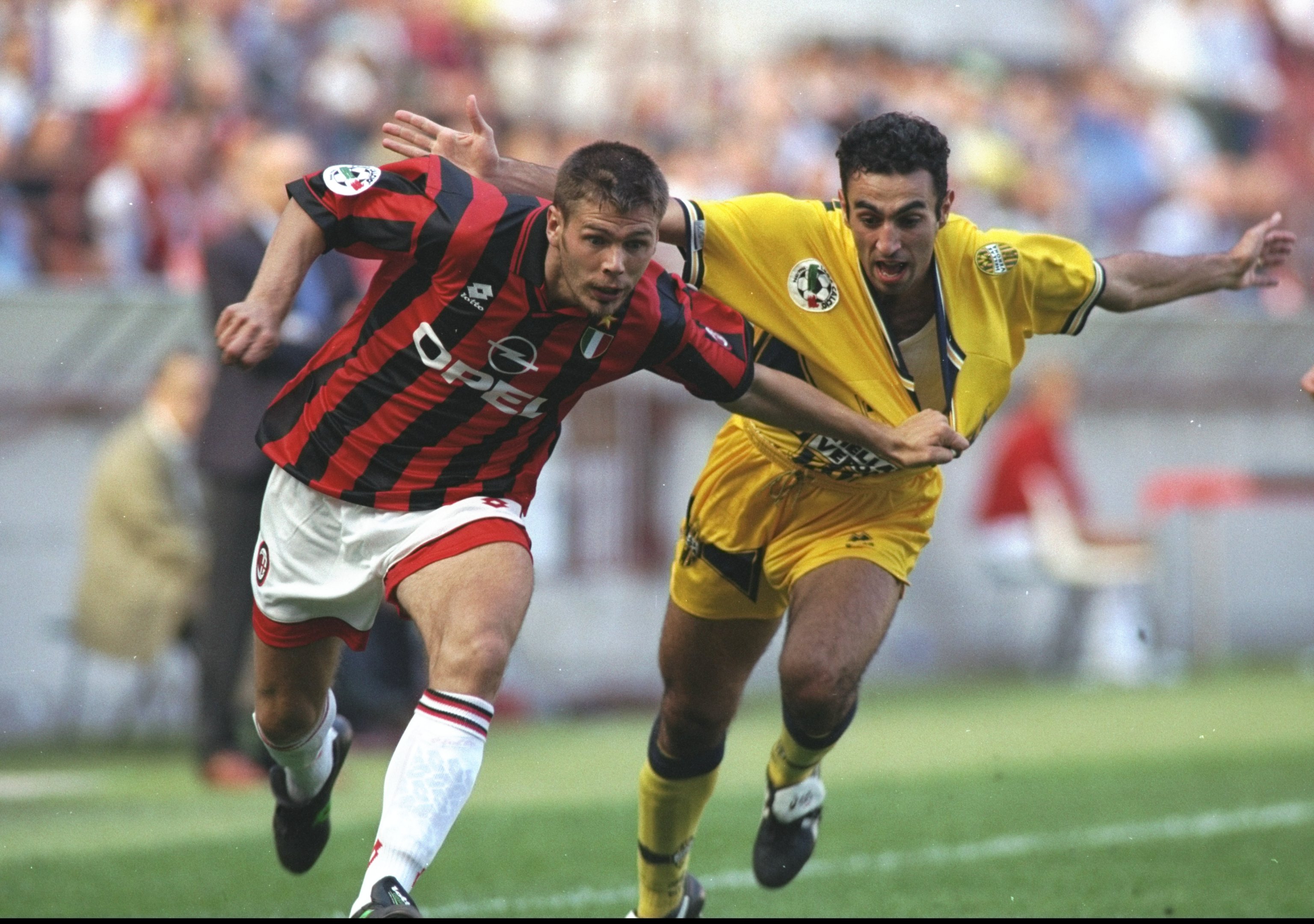
Zvonimir Boban spent nine seasons at AC Milan and won four Serie A titles, as well as the Champions League in 1993/94.
A gifted and hard-working midfielder with excellent vision, passing and close control, Boban also captained Croatia to third place at the 1998 World Cup in France. He retired in October 2001 after a short spell at Celta Vigo.
32. Carlos Valderrama
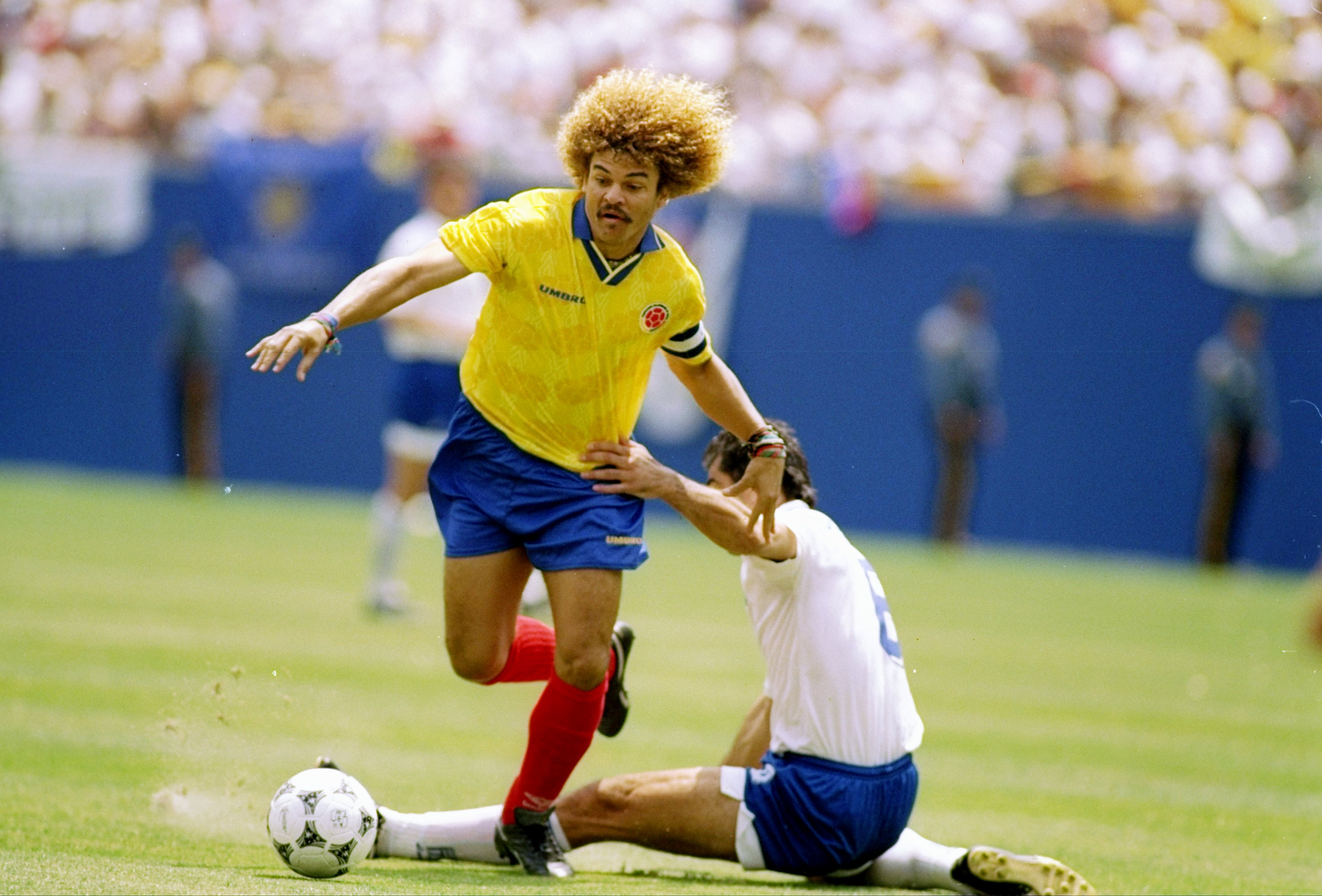
Carlos Valderrama impressed for Colombia at the 1990 and 1994 World Cups and was South American Player of the Year in 1993 after leading the Cafeteros to third place in the Copa America and a 5-0 win over Argentina later in the year.
The playmaker with the afro hair and moustache also led Atletico Jumior to Colombian titles in 1993 and 1995. He ended his Colombia career in 1998 with 111 caps and 11 goals – and is the fifth highest assister ever in international football.
31. Dunga
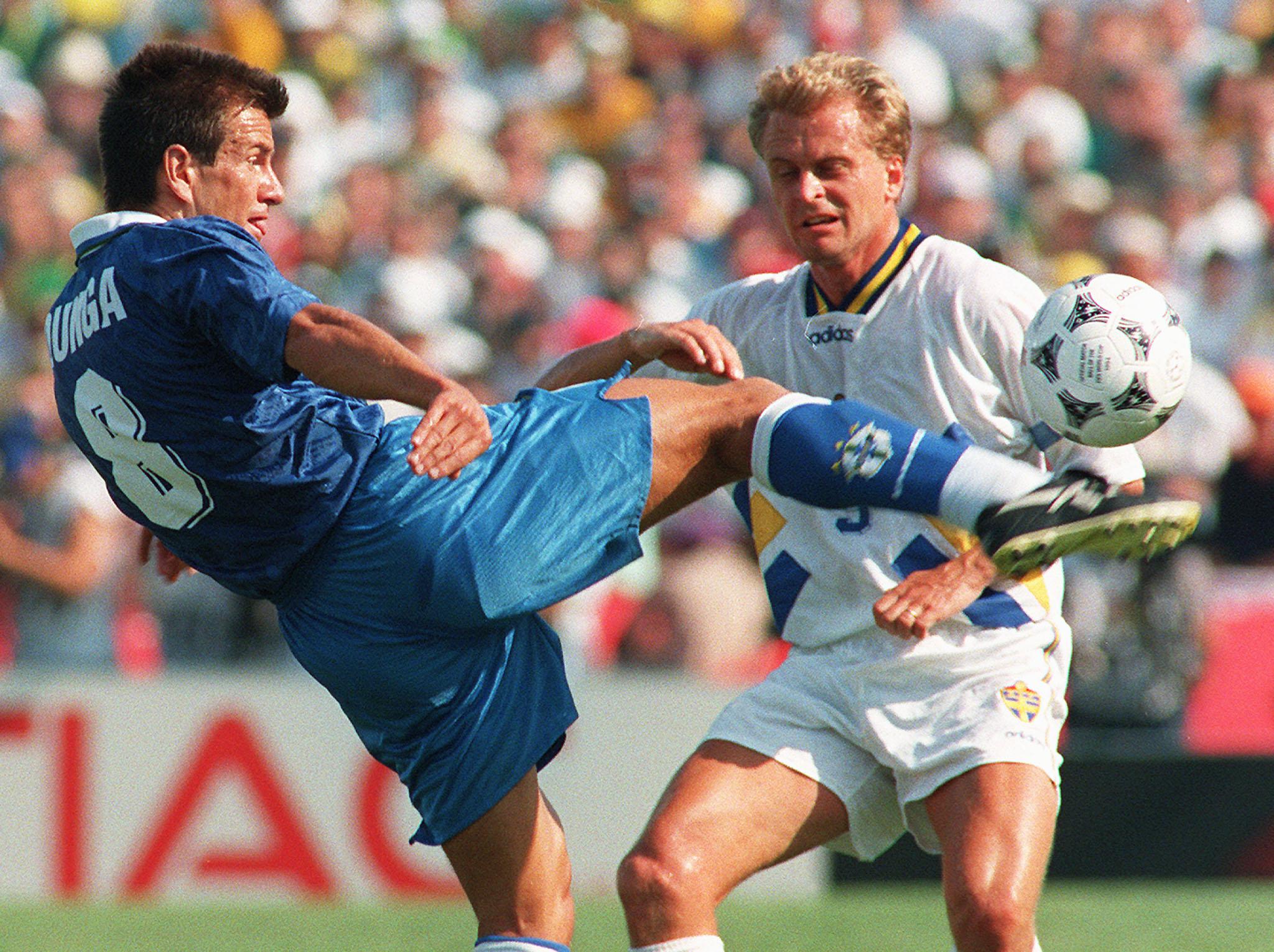
A rather rustic and no-nonsense footballer far removed from the traditions of a
classic Brazilian midfielder, Dunga divided opinion in his homeland and was particularly unpopular following the nation's last-16 exit to Argentina at the 1990 World Cup.
His style of play was regarded as dull by many in a much more pragmatic Brazil team, but as captain in 1994, the defensive midfielder provided a solid spine which allowed the likes or Romario and Bebeto to shine. With Dunga, Brazil won their fifth World Cup and came close to adding a sixth in France four years later.
30. Fernando Redondo

A stylish deep-lying playmaker for Real Madrid and Argentina, Fernando Redondo's most memorable moment was his outrageous back-heel assist against Manchester United in 2000, but he was an elite midfielder all through the 1990s.
Surprisingly sold to AC Milan amid protests from Madrid fans in 2000, he suffered a serious injury in one of his first training sessions in Italy and was never the same again. He also played only 29 times for Argentina, refusing to cut his hair on the request of coach Daniel Passarella in 1998, but was named in AFA's best XI of all time in 2016.
29. Emmanuel Petit

After talks with Tottenham in 1997, Emmanuel Petit took a taxi straight to Arsene Wenger's house with Spurs' money and signed for Arsenal instead.
Alongside Patrick Vieira in central midfield, Petit helped the Gunners win the double in his first season at Highbury and also started – and scored –for France as Les Bleus beat Brazil in the World Cup final in 1998. Not a bad year!
28. David Ginola
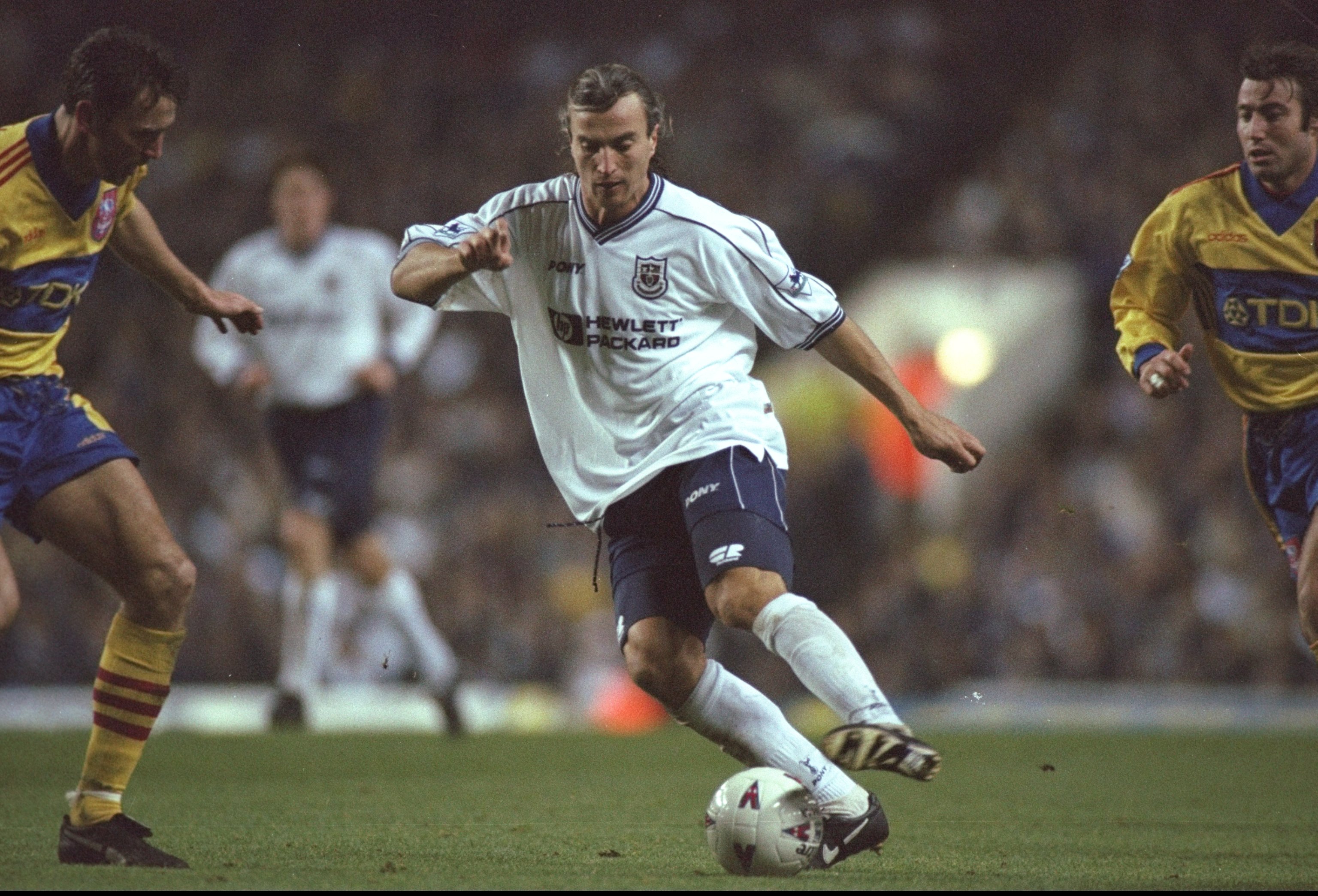
When France won the World Cup in 1998, David Ginola was working on the BBC as a pundit and said his dream had been stolen. In 1993, he had been made the scapegoat as Les Bleus missed out on qualification after an overhit cross allowed Bulgaria to score a late leveller.
But he was a wonderful winger for PSG, Newcastle and Tottenham in the 1990s. Linked with Real Madrid and Barcelona and nicknamed "El Magnifico" by the Spanish press, Ginola was dubbed "the most exciting player in the world" by Johan Cruyff in 1999 and later expressed regret at never playing for one of Europe's elite. He was certainly good enough.
27. Andreas Moller

Andreas Moller was part of the German squads which won the 1990 World Cup and Euro 96, though he did not feature in the final of either.
Moller hit the winning penalty against England in 1996, but was suspended for the showpiece against the Czech Republic. Known as "Turbo Moller" for his impressive pace, the playmaker also helped Juventus claim the UEFA Cup in 1993 and was in the Borussia Dortmund side which won the Champions League in 1997.
26. Juan Sebastian Veron
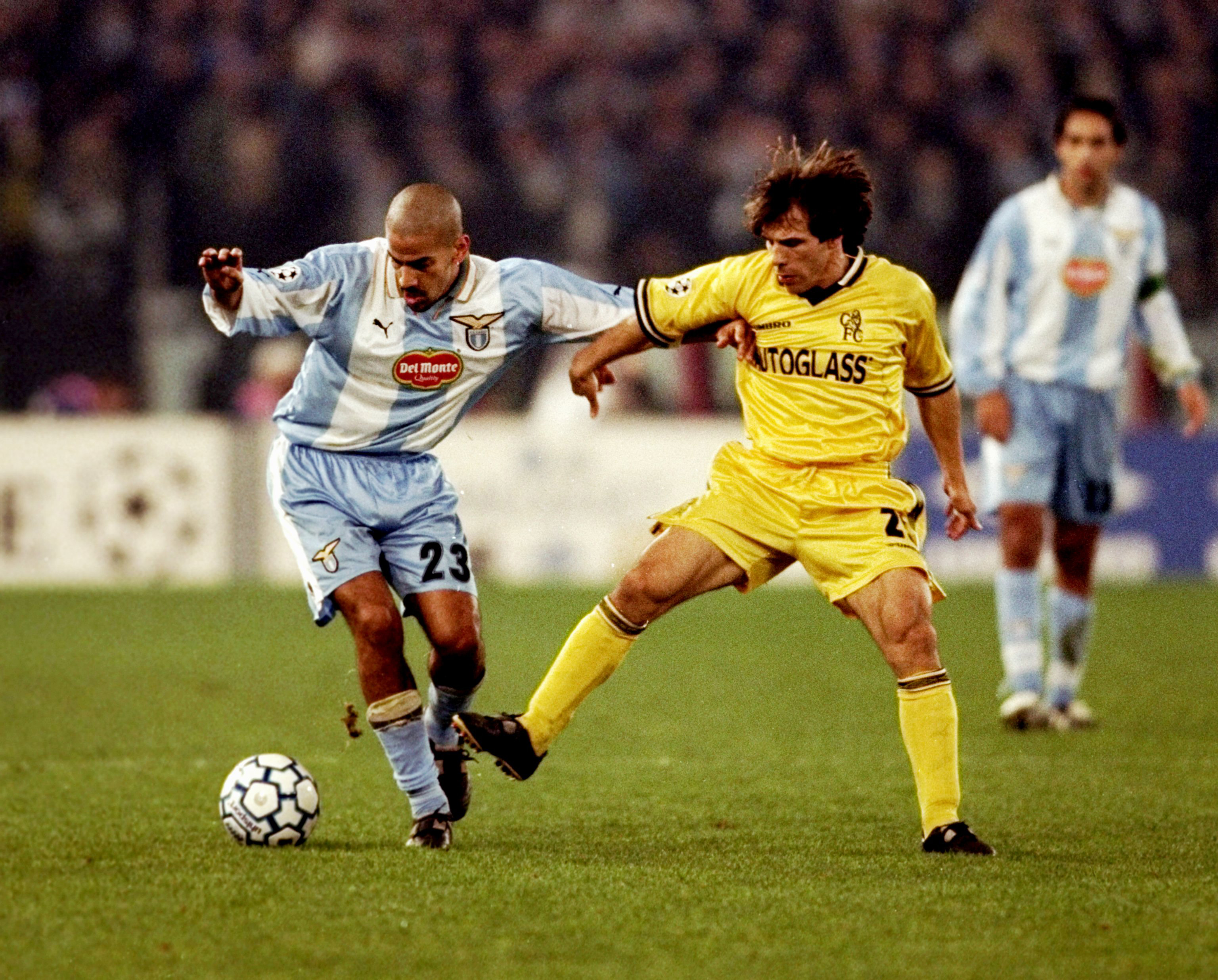
Juan Sebastian Veron was one of the world's best midfielders in the late 1990s, when he enjoyed successful spells at Sampdoria, Parma and Lazio.
A tenacious and physical player with excellent technique and vision, the Argentine starred in an advanced role behind the forwards. He helped Parma win the Coppa Italia and the UEFA Cup in 1998/99, before leading Lazio to the Scudetto the following season.
25. Rui Costa
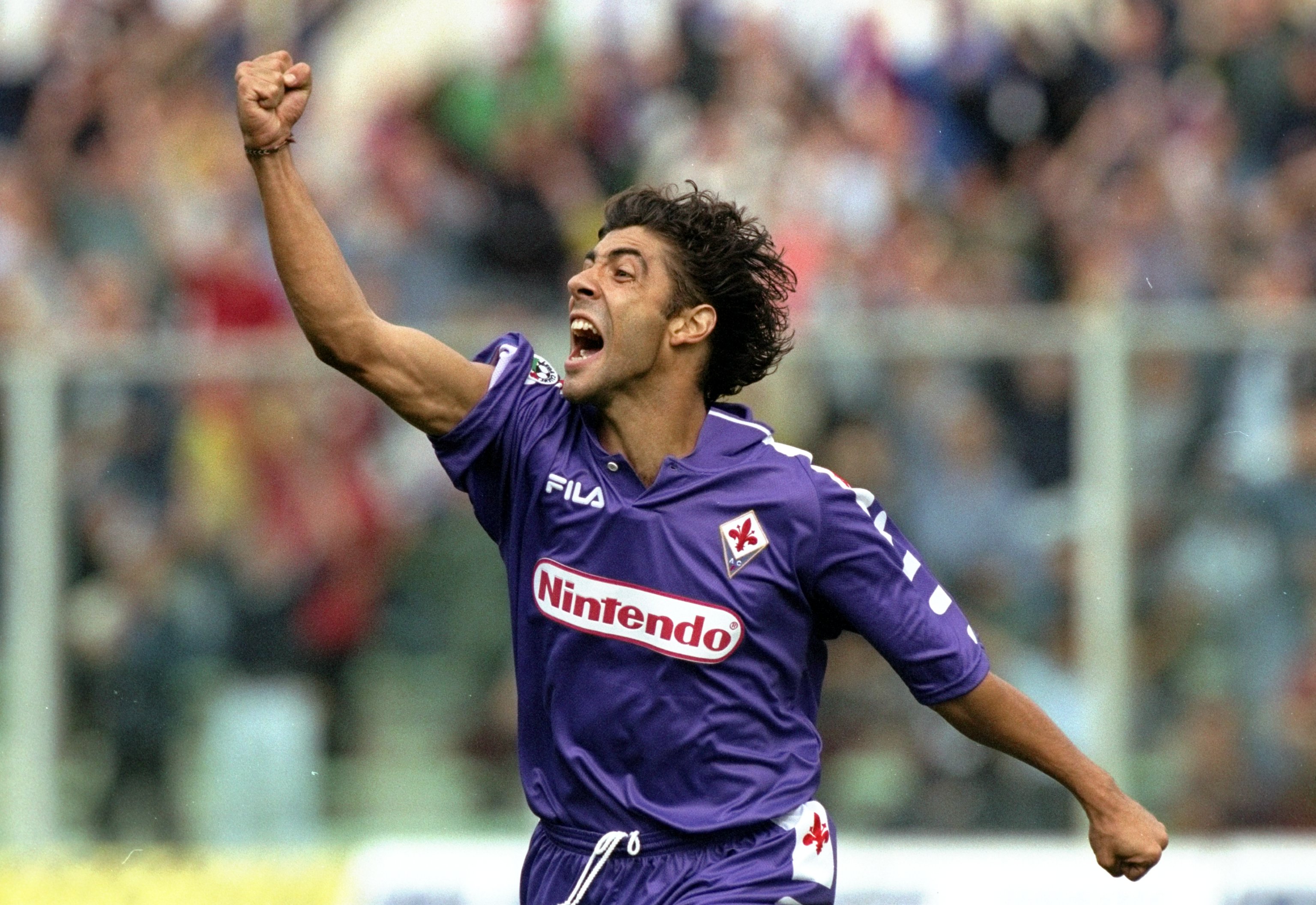
Rui Costa won the big prizes after he moved to AC Milan in 2001, but the stylish Portuguese midfielder's best years were spent at Fiorentina.
Operating as a classic number 10 in a memorable team which also featured the great Gabriel Batistuta, Costa helped La Viola to a couple of Coppa Italia titles and a Supercoppa Italiana. And the football was exquisite.
24. Enzo Scifo

Having helped Belgium to the semi-finals of the World Cup as a 20-year-old in 1986, Enzo Scifo went on to play in the tournament three more times in the 1990s.
He scored a fine long-range effort against Uruguay in 1990, which was later voted as the 10th greatest FIFA World Cup goal of the Century in a 2002 poll. He won 84 caps in total, scoring 18 goals, and also won trophies at Monaco, Anderlecht and Torino in the 1990s.
23. Marc Overmars
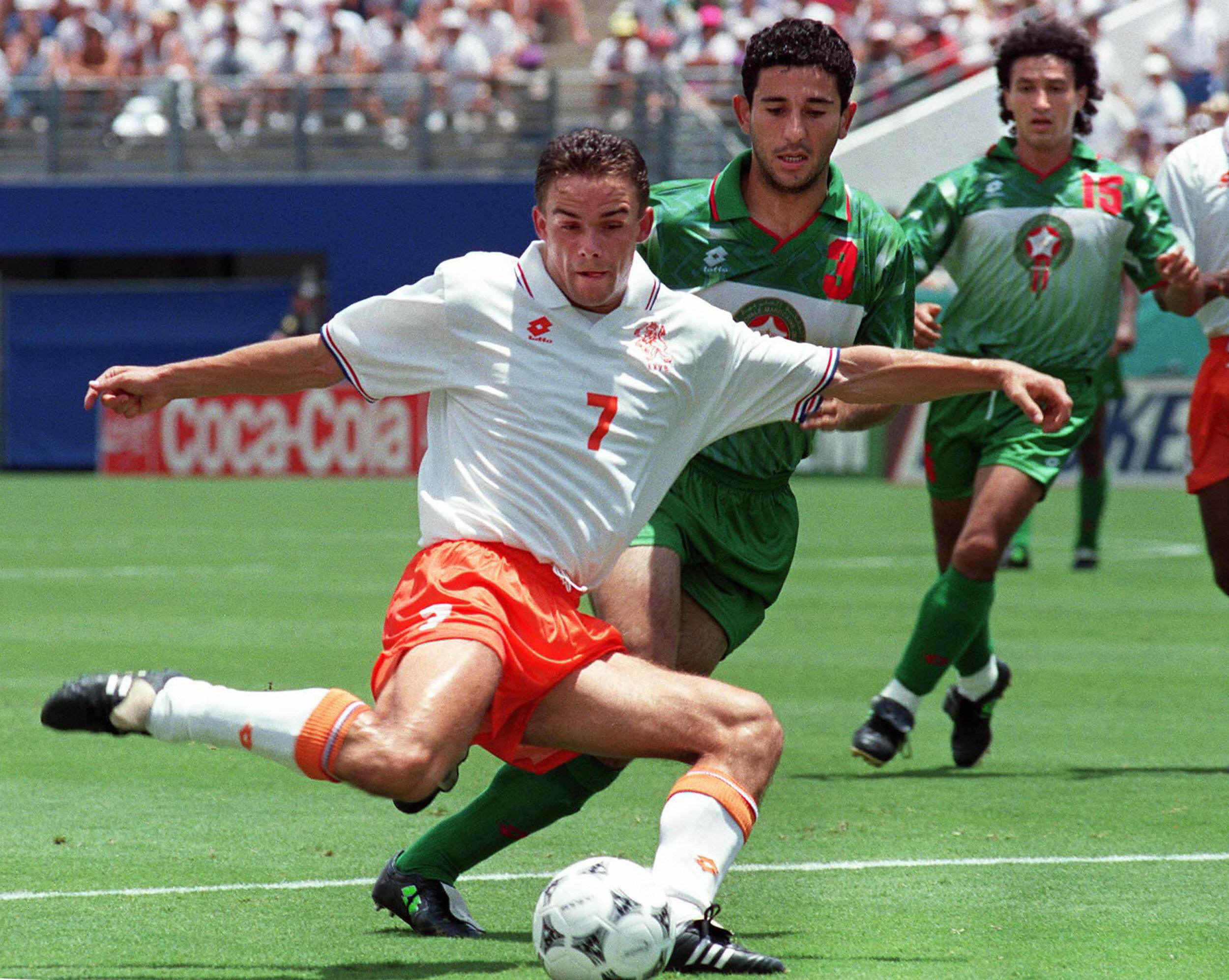
Marc Overmars was a brilliant winger for Ajax, Arsenal and the Dutch national team in the 1990s.
A Champions League winner with the Amsterdam giants in 1995, Overmars joined the Gunners two years later and was part of the team which won the double under Arsene Wenger in 1997/98. He left for Barcelona in 2000 and was not quite the same in a difficult period for the Catalan club.
22. Diego Simeone
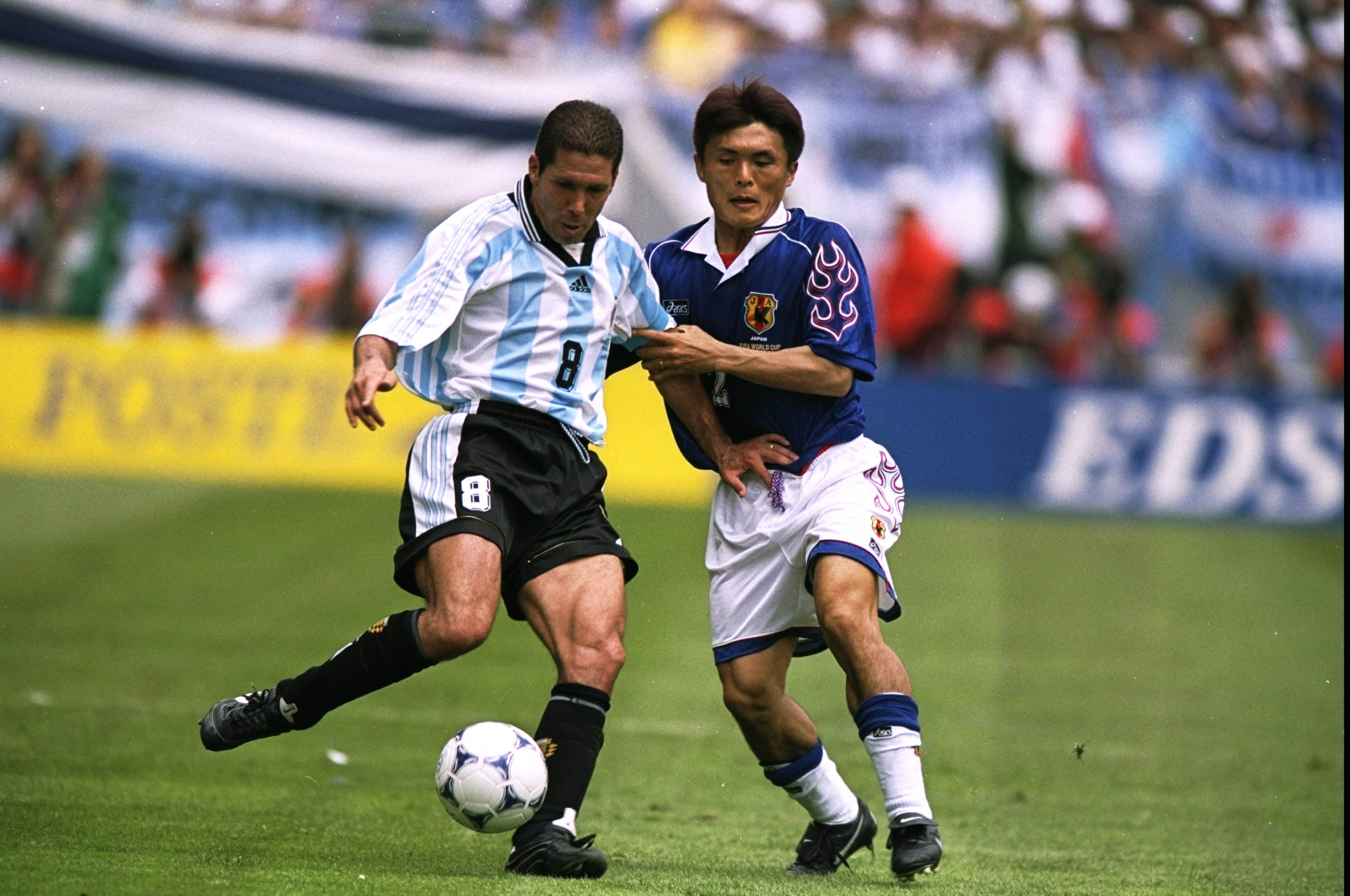
Courageous, committed and fiercely competitive, Diego Simeone played every match with his heart on his sleeve as a tenacious, all-action midfielder.
Simeone was at his peak in the 1990s, leading Atletico Madrid to a La Liga and Copa del Rey double in 1996 and enjoying successful spells at Pisa, Sevilla, Lazio and Inter He also won 108 caps for Argentina – most during that decade – and won the Copa America in 1991 and 1993.
21. Luis Enrique

Luis Enrique signed for Real Madrid in 1991 but famously crossed the Clasico divide as he signed for Barcelona at the end of his contract five years later.
His best years came at Camp Nou, where he played in a number of different positions but excelled as an attacking midfielder, contributing plenty of goals and helping the Catalans win a series of trophies in the late 1990s. He also featured in three World Cups for Spain and was famously left bloodied by Mauro Tassotti's elbow in La Roja's 2-1 loss to Italy in 1994.
20. Robert Prosinecki
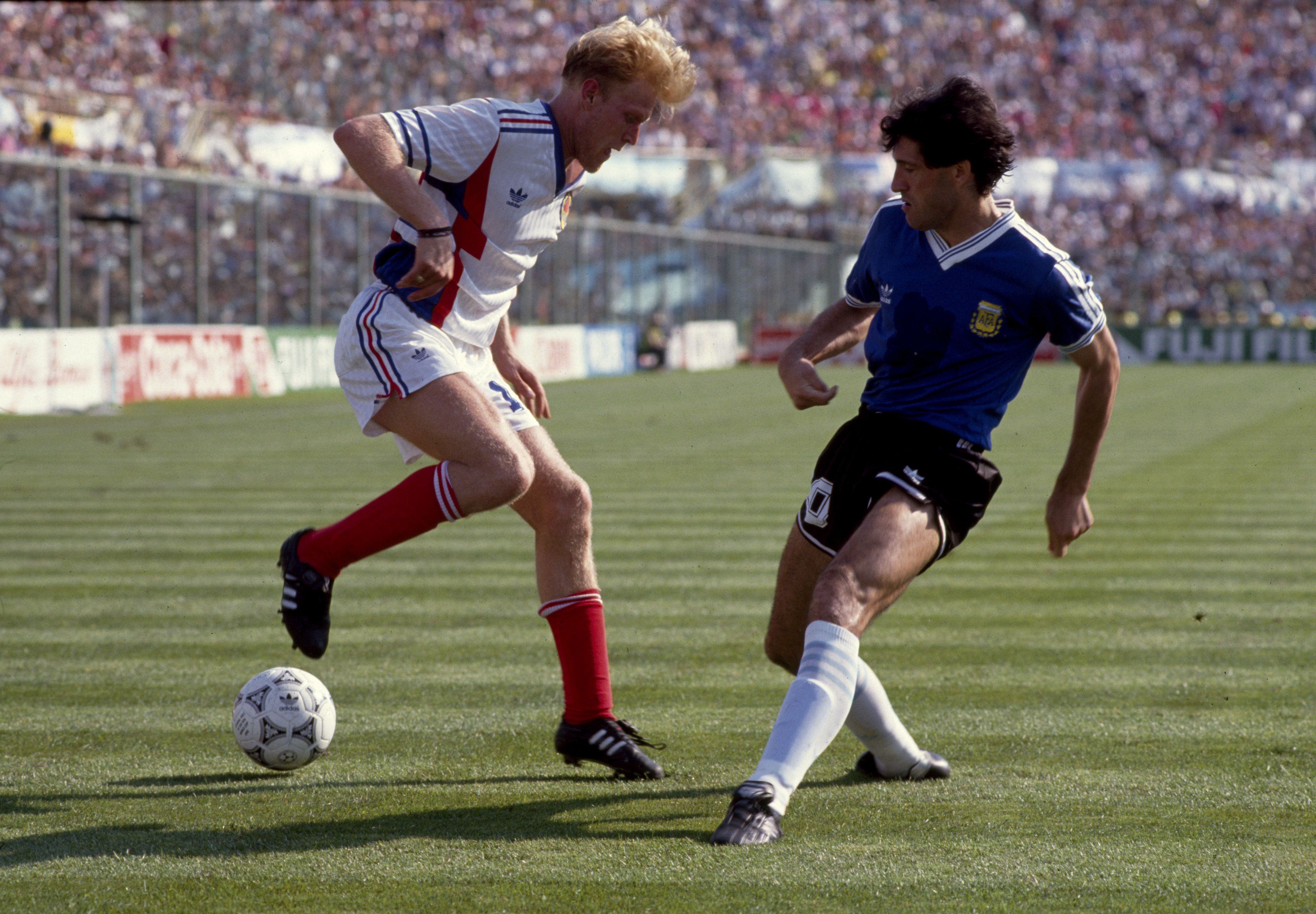
Robert Prosinecki is the only player in history to have scored for two different nations at a World Cup, having netted for Yugoslavia in 1990 and then for Croatia eight years later.
An attacking midfielder who could play through the middle or on the right, Prosinecki possessed outstanding technique and excellent vision. After winning the European Cup with Red Star Belgrade, he went on to play for Real Madrid and Barcelona in the 1990s. And in the twilight of his career, he famously spent a season at Portsmouth.
19. Paul Gascoigne
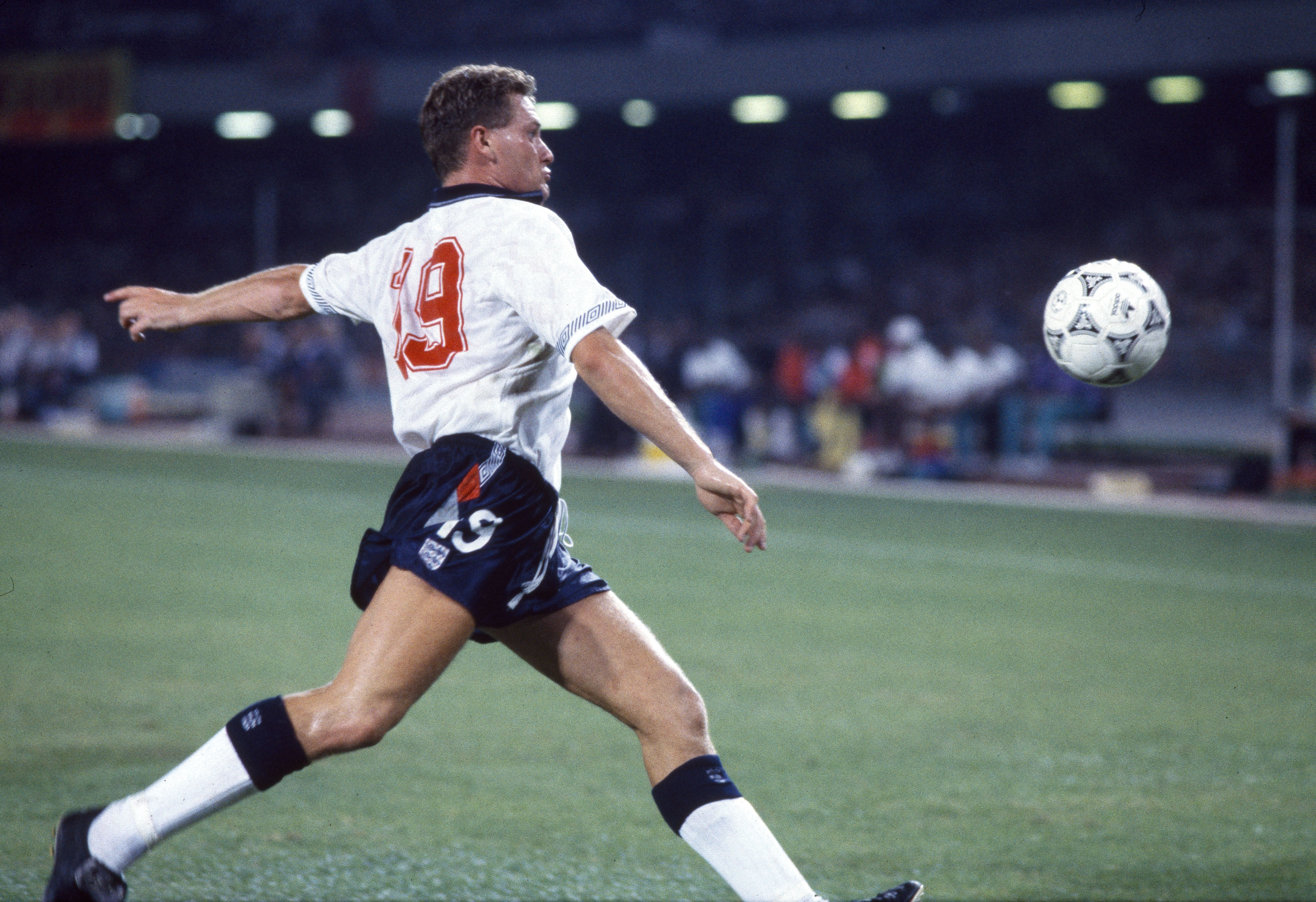
Paul Gascoigne was never quite the same player after rupturing his cruciate ligaments in the 1991 FA Cup final, following a dangerous knee-high foul on Nottingham Forest's Gary Charles.
Gazza had been England's star as they reached the semi-finals of the 1990 World Cup and famously broke down in tears after picking up a yellow card which would have seen him miss the final. Bobby Robson's side lost on penalties, anyway. At Lazio and with Rangers, Gascoigne still had some memorable moments and scored that wonderful volley against Scotland at Euro 96, but something was lost with his injury.
18. Roy Keane
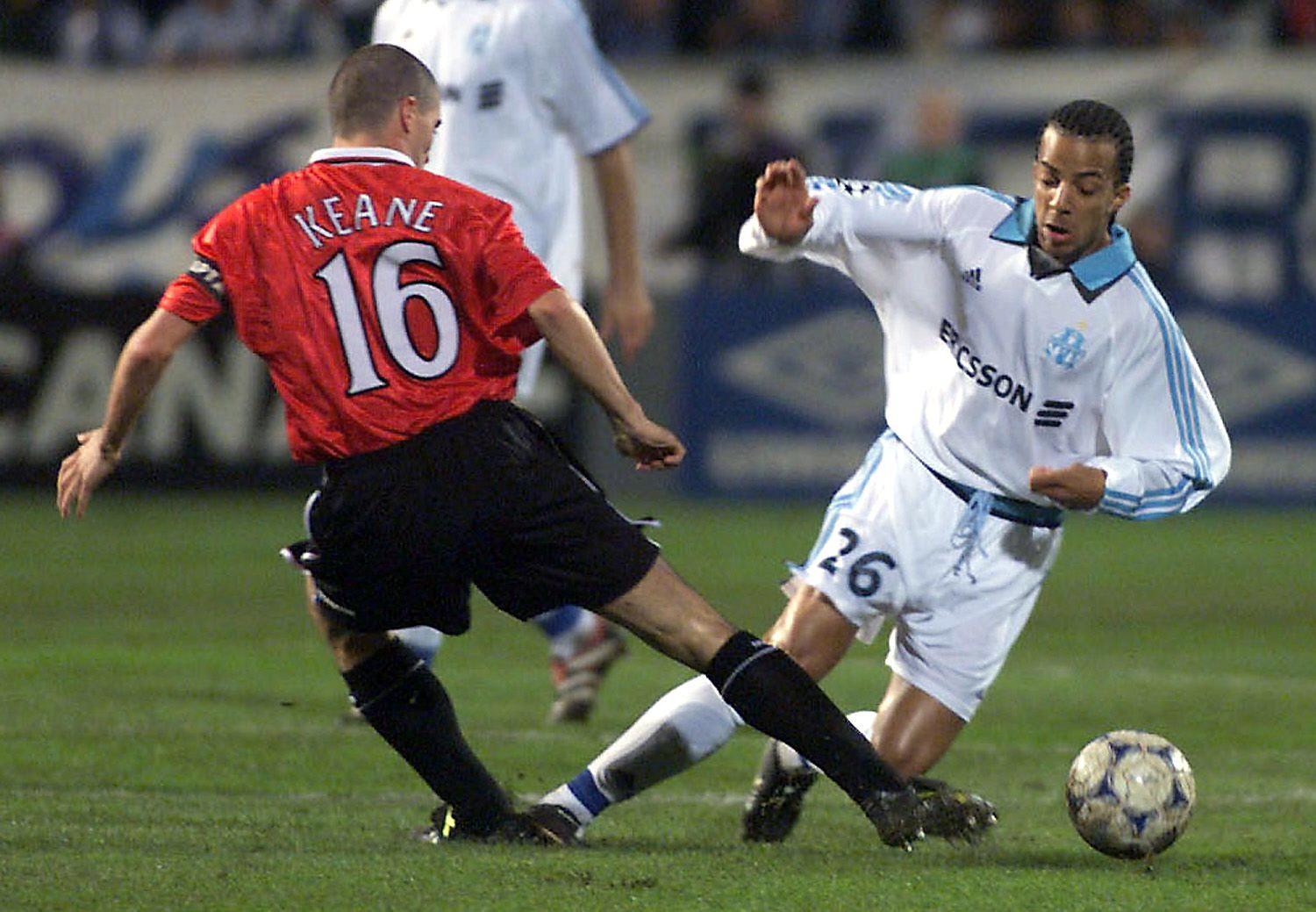
Roy Keane signed for Manchester United in 1993 and was a huge part of the club's success under Sir Alex Ferguson, protecting his defence and driving the team forward from central midfield.
The Irishman was instrumental in United's treble triumph of 1998/99 as he returned from a serious injury in the previous campaign to captain the team to their finest hour. Often remembered for starting the comeback against Juventus, he was outstanding throughout the season. An unbelievable player for United and Ireland too, until his infamous World Cup walkout in 2002.
17. Patrick Vieira

Virtually unused by AC Milan, Patrick Vieira was snapped up by Arsene Wenger and quickly became a hero at Arsenal in the late 1990s.
An aggressive box-to-box midfielder who could defend, intercept and initiate attacks, Vieira also popped up with some important goals and was an absolute leader in the centre of the park. His rapid rise in north London saw him included in France's plans and he came on as a substitute in the 1998 World Cup final.
16. Edgar Davids
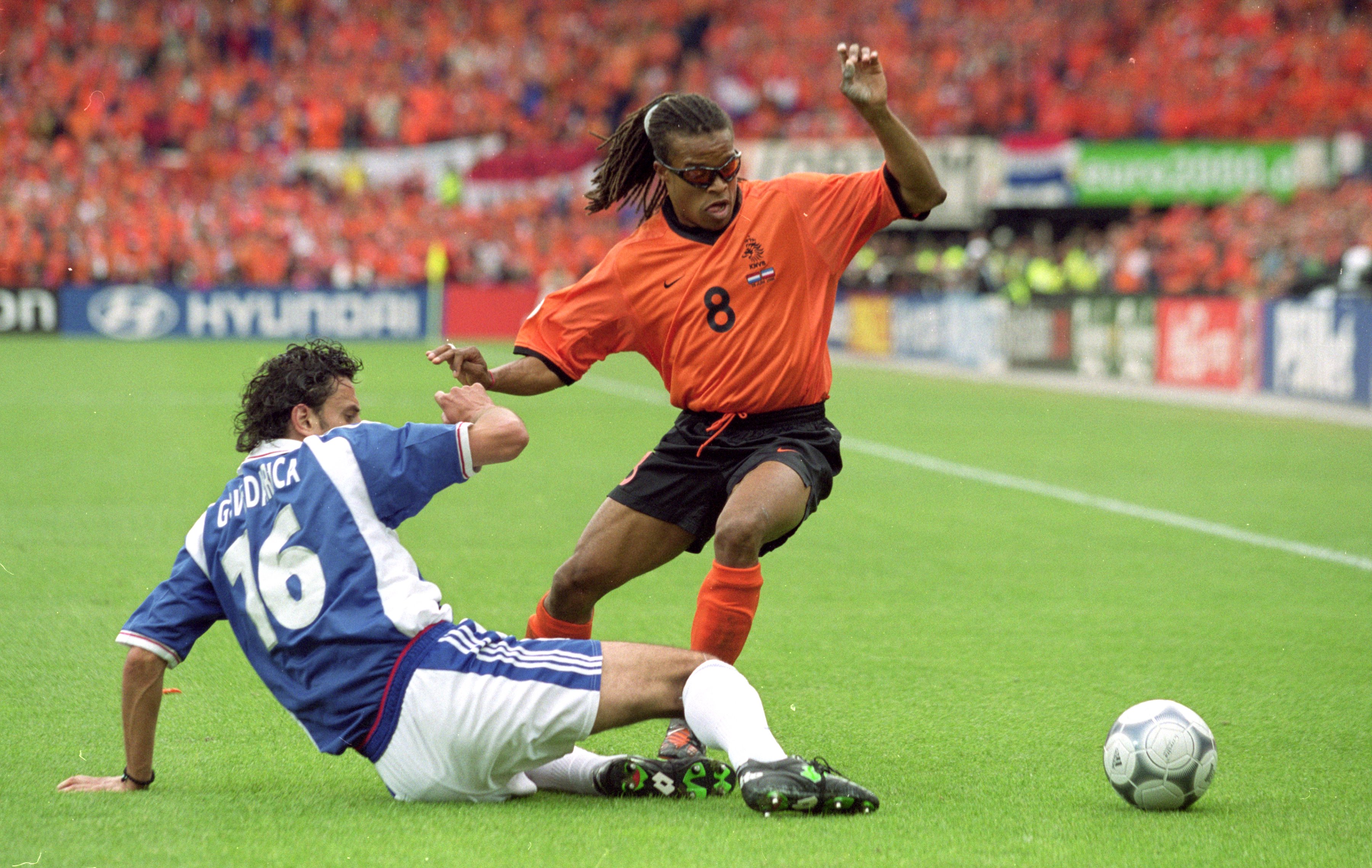
Edgar Davids was another player who found opportunities hard to come by at AC Milan, but the tough-tackling, dynamic defensive midfielder was one of the best of his generation and soon showed his quality at Juventus.
Davids was already a Champions League winner with Ajax before moving to Italy and added another in an impressive six-and-a-half season spell at Juve, before short stays at Barcelona, Inter, Tottenham, Ajax again, Crystal Palace and Barnet. He also won 74 caps for the Netherlands.
15. David Beckham

David Beckham came to the world's attention with his stunning goal from the halfway line for Manchester United at Wimbledon in 1996.
Although not a winger, Beckham excelled on the right of midfield for United, setting up numerous goals with his wonderful deliveries from out wide. He soon became an important player for England, too, and came back stronger for club and country following the horrendous criticism and abuse he received for his red card against Argentina at the 1998 World Cup. He was absolutely key as United won the treble in 1998/99.
14. Clarence Seedorf

An aggressive, powerful and technically gifted player with an eye for goal, Clarence Seedorf could operate anywhere across the midfield and helped three of his clubs sides – Ajax, Real Madrid and AC Milan – win the Champions League.
Much of his best football came in the 1990s and his 40-yard driven lob against Atletico is one of the many highlights from that time. He also won 87 caps for the Dutch national team in an extraordinary career.
13. Ryan Giggs
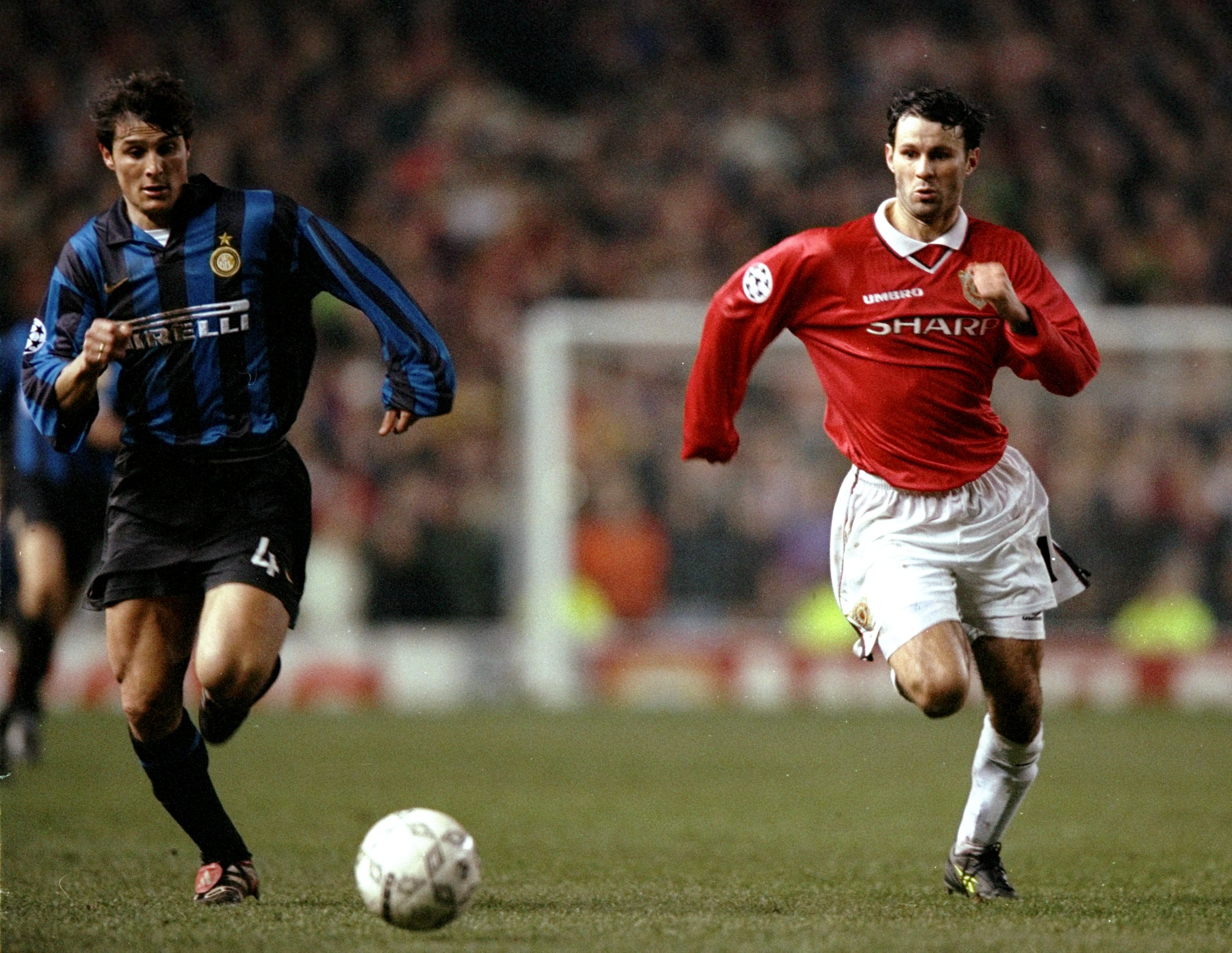
Ryan Giggs made his Manchester United debut as a 17-year-old in 1991 and went on to make an unbelievable 963 appearances in an extraordinary career at Old Trafford.
In the 1990s, he was a brilliant winger blessed with pace and plenty of tricks. He was the first of the famous Class of '92 to break through into the first team and outlasted them all, too. En route to the treble, Giggs scored an incredible extra-time winner against Arsenal in the FA Cup semi-finals in 1999 and also assisted Teddy Sheringham for United's late equaliser against Bayern Munich in the 1999 Champions League final.
12. Frank Rijkaard
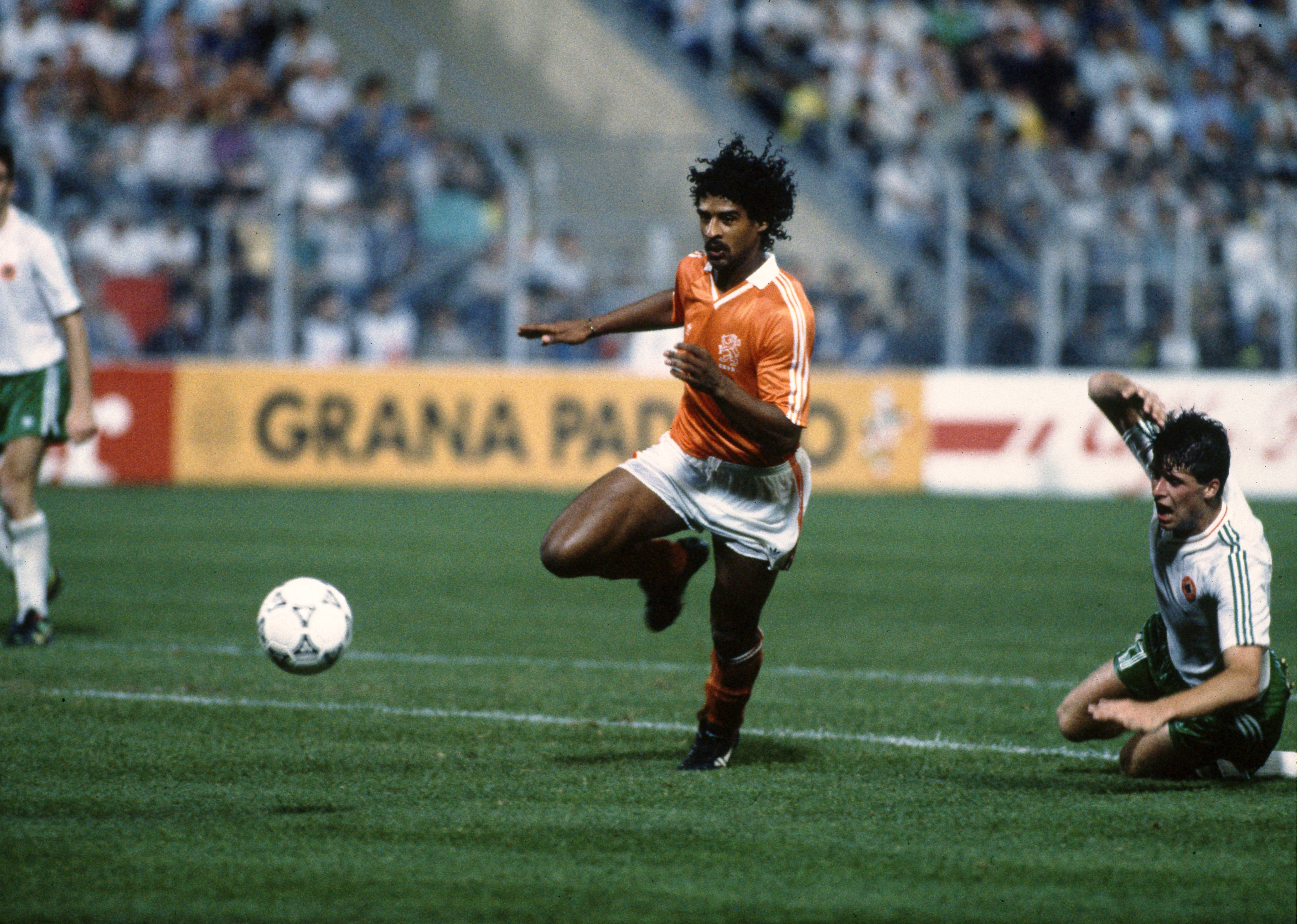
Champions of Europe two years earlier, the Dutch were disappointing at the 1990 World Cup and Frank Rijkaard's frustrations showed when he spat at Rudi Voller in the Netherlands' defeat to West Germany.
But Rijkaard was still a wonderful player. The elegant defensive midfielder scored AC Milan's only goal as the Rossoneri beat Benfica to win the European Cup in May of 1990. In his last two seasons in Italy, he helped Milan win two Serie A titles, before returning to Ajax and leading a talented young side to two Dutch championships and Champions League glory in his final season as a player.
11. Paul Scholes
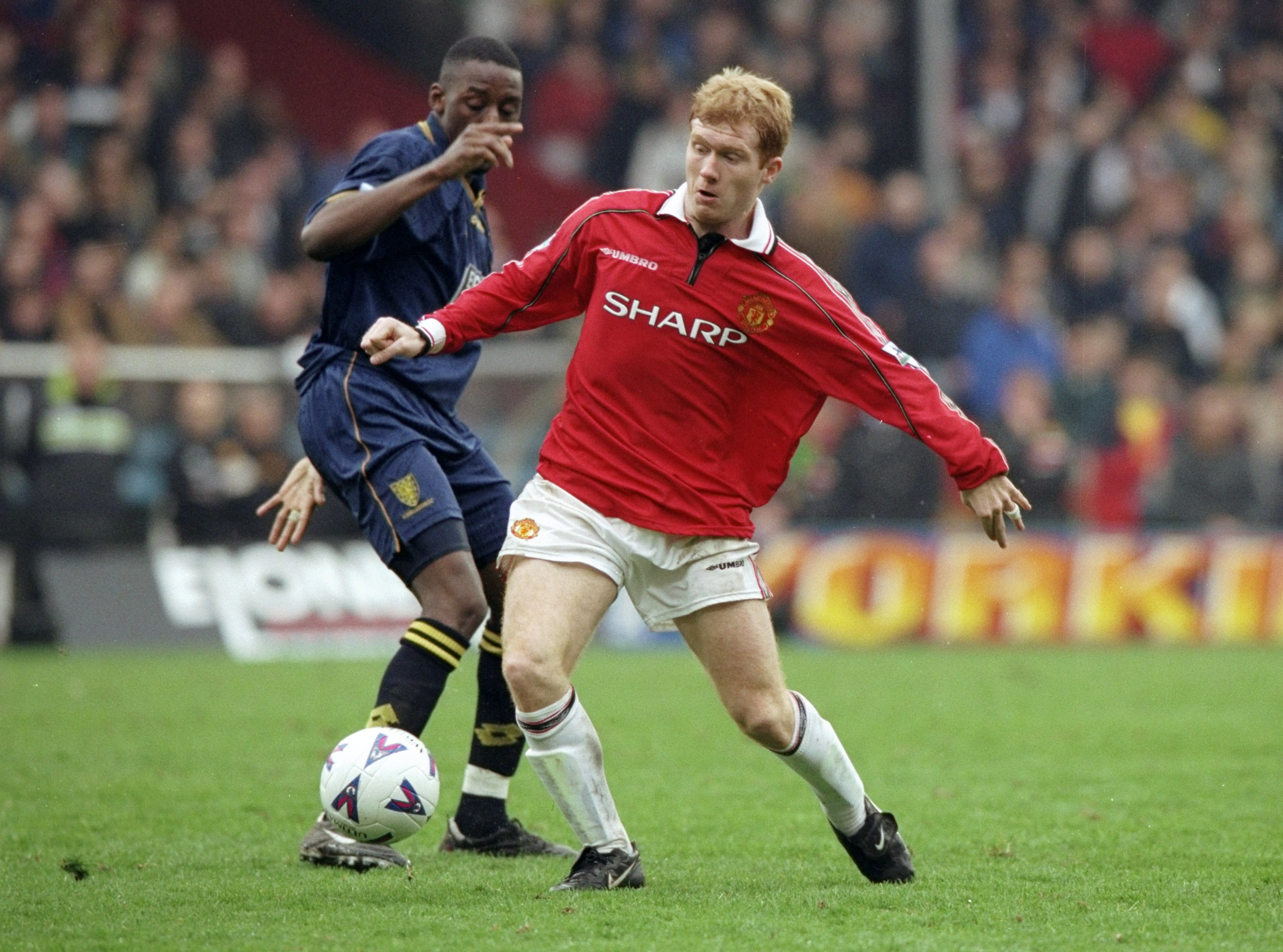
Paul Scholes was the most unassuming member of Manchester United's wonderful midfield of the late 1990s. He was not flashy like David Beckham, did not dribble like Ryan Giggs and certainly could not tackle like Roy Keane. But he was a genius.
Asked who was the best player in that team, the answer from his former team-mates is almost always Scholes. A creator, a scorer and a wonderful passer, the shy Salford-born midfielder made that United team tick. He also excelled for England, but was too often played out of position and ended up cutting short his international career.
10. Didier Deschamps

Eric Cantona famously described Didier Deschamps as a "water-carrier", suggesting that the midfielder was simply there to win the ball back and pass it to his more talented team-mates.
There may have been an element of truth in that, but Deschamps was extremely effective as a defensive midfielder for France and also his club sides. He captained Les Bleus in their 1998 World Cup win – and again as they claimed the title at Euro 2000 – and contributed to Champions League victories with Marseille and Juventus in an impressive career.
9. Diego Maradona

Diego Maradona was still the world's best midfielder in 1990, but things unravelled quite quickly for the Argentina legend after that.
Having led Napoli to a second Scudetto in three years and taken Argentina to another World Cup final, Maradona was hit with a ban for cocaine use the following season and left Italy under a cloud. He reappeared with Sevilla in 1992, before spells with Newell's and Boca Juniors in his homeland, but was not the same as before. And he tested positive again for a banned substance at the 1994 World Cup in the United States.
8. Gheorghe Hagi
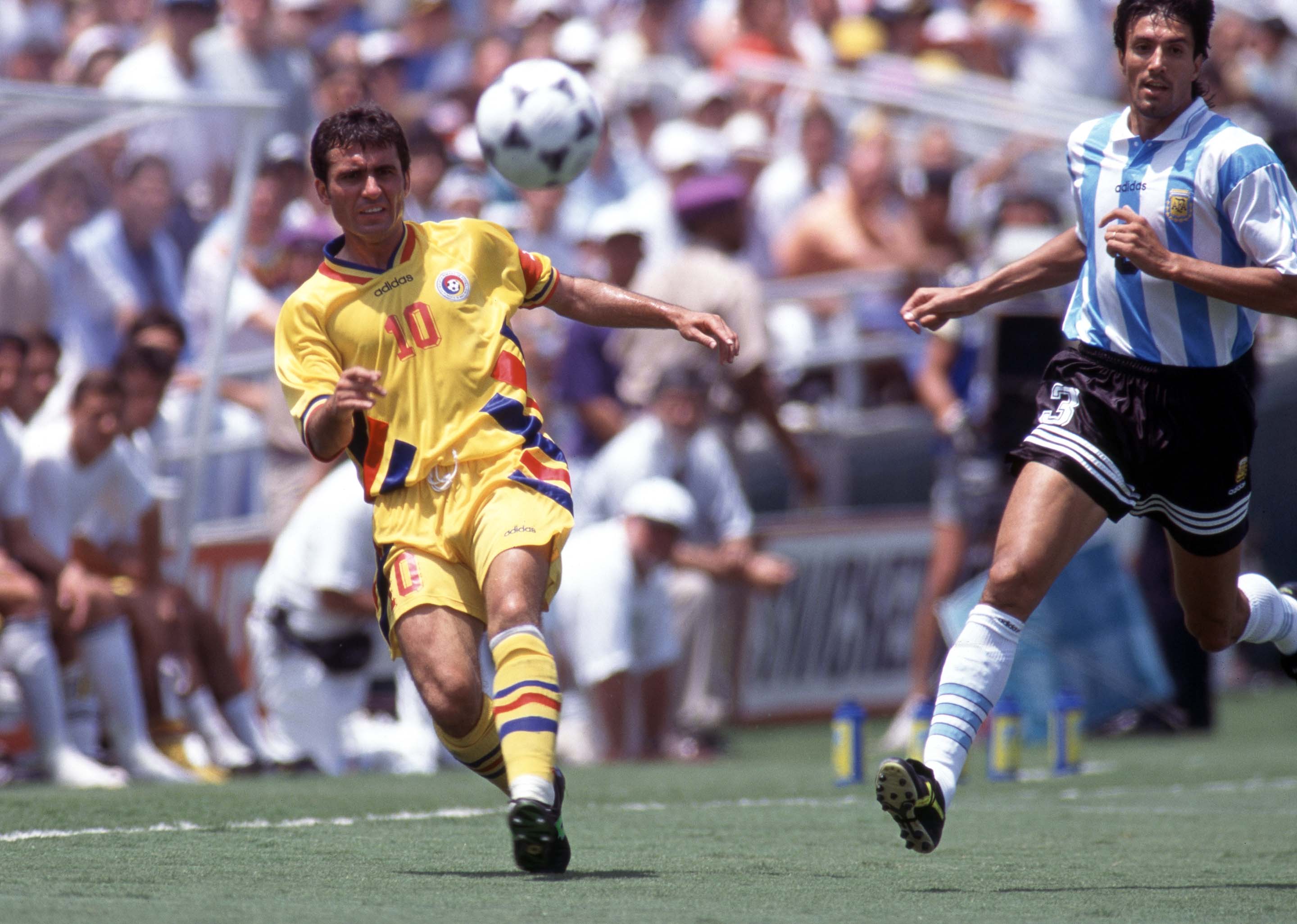
Gheorghe Hagi was Romania's talisman throughout the 1990s and helped his nation to the knockout stages of three successive World Cups.
The highlight came in 1994, when Hagi scored three times, including an amazing 40-yard lob against Colombia and another in his side's surprise 3-2 win over Argentina in the last 16. He ended his international career in 2000 with 124 caps and 35 goals and led Galatasaray to a string of titles late in the 1990s, having featured for both Real Madrid and Barcelona earlier in the decade.
7. Dejan Savicevic

Dejan Savicevic hated training and fell out with almost all of his coaches in a controversial career – but the Montenigrin midfielder was an extraordinary footballer.
A playmaker with excellent vision and a unique dribbling ability, Savicevic turned on the style in Champions League wins for Red Star Belgrade and AC Milan in the early 1990s. He was also a Ballon d'Or runner-up in 1991, but received heavy criticism for his poor work rate and lack of consistency. When he was in the mood, though, he was unbelievable.
6. Thomas Hassler

A dimunitive attacking midfielder with Germany in the 1990s, Thomas Hassler was a World Cup winner in 1990 and a champion again at Euro 96.
With quick feet, pace, good vision to pick out a pass and excellent technique, Hassler could dribble, provide assists and score goals. A free-kick specialist, he netted 11 times in 101 international appearances. But unusually for a player of his ability, he never did win a club trophy, finishing as runner-up five times at Koln, Juventus, Roma and Karlsruher.
5. Michael Laudrup
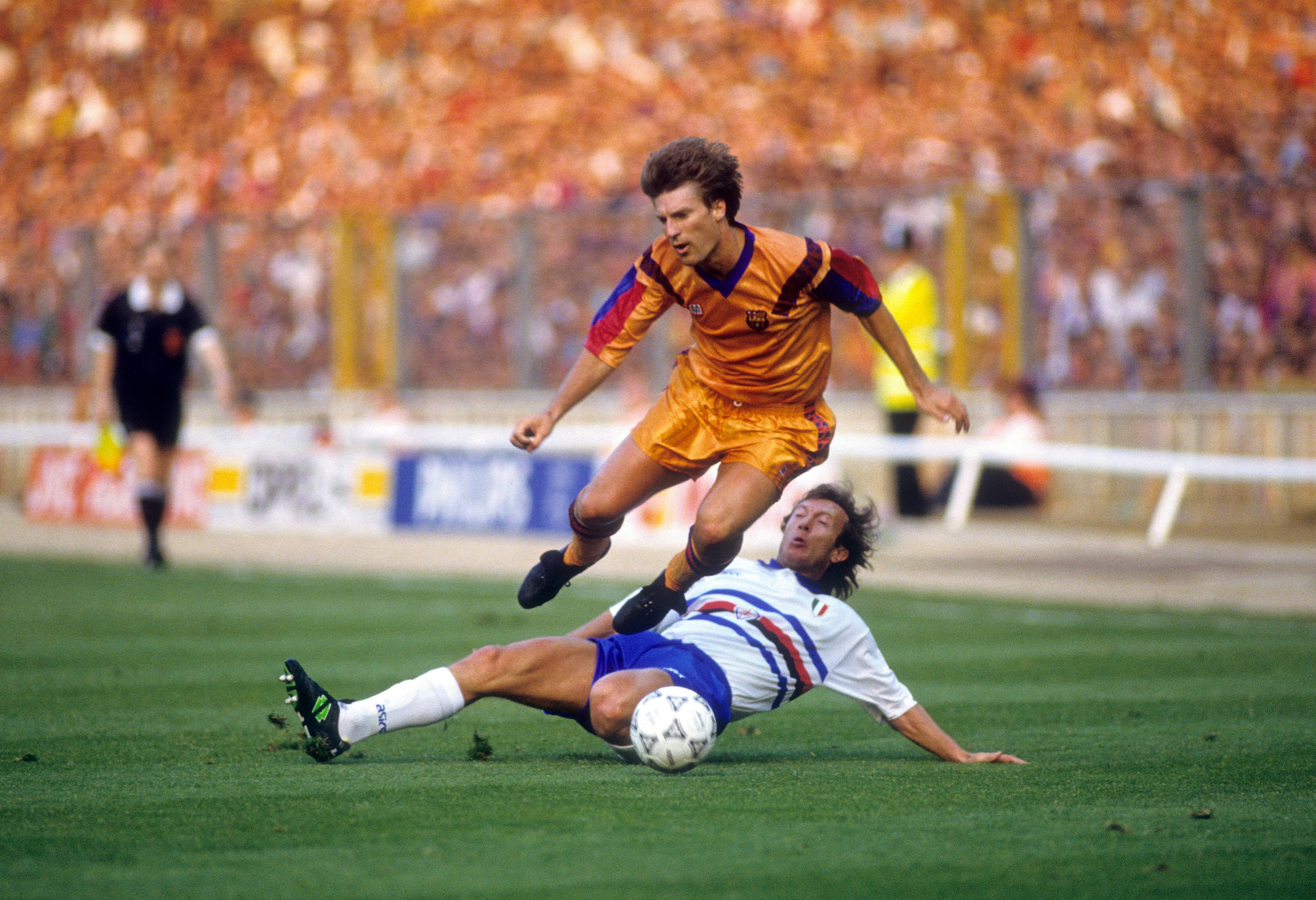
Michael Laudrup joined Barcelona from Juventus in 1989 and arguably played the finest football of his career as part of Johan Cruyff's Dream Team, featuring in a number of different midfield and attacking roles for the Catalan club.
Laudrup was key as Barça won four straight La Liga titles and a first-ever European Cup in 1992, but he ended up joining Real Madrid in 1994 after falling out with Cruyff. Curiously, he was on the winning side for 5-0 wins in El Clasico with both Barça and Madrid. He missed Denmark's Euro 1992 win, believing the team's chances to be slim, but later came out of international retirement and is considered the nation's greatest-ever player.
4. Luis Figo
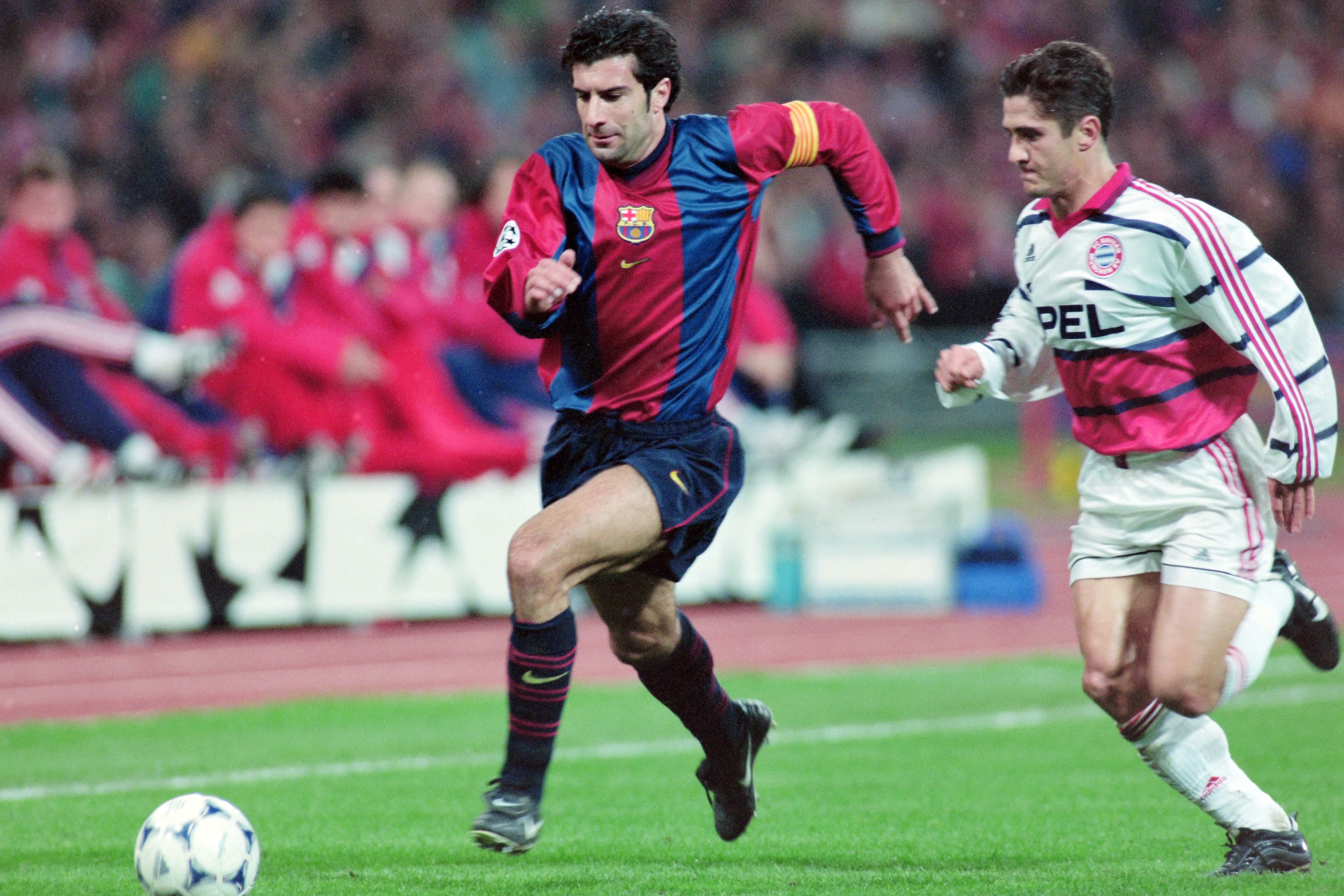
Rivaldo once commented that Luis Figo would have received much more acclaim had he been Brazilian. For a period in the late 1990s, the Portuguese may have been the best player in the world and he was adored by Barcelona fans.
That love turned to hate when he did the unthinkable and joined Real Madrid in 2000. The Portuguese won the Ballon d'Or that year and overall, his stats at the two clubs are similar. He won the Champions League at Real, too, but was probably a better player during his time at Camp Nou.
3. Rivaldo
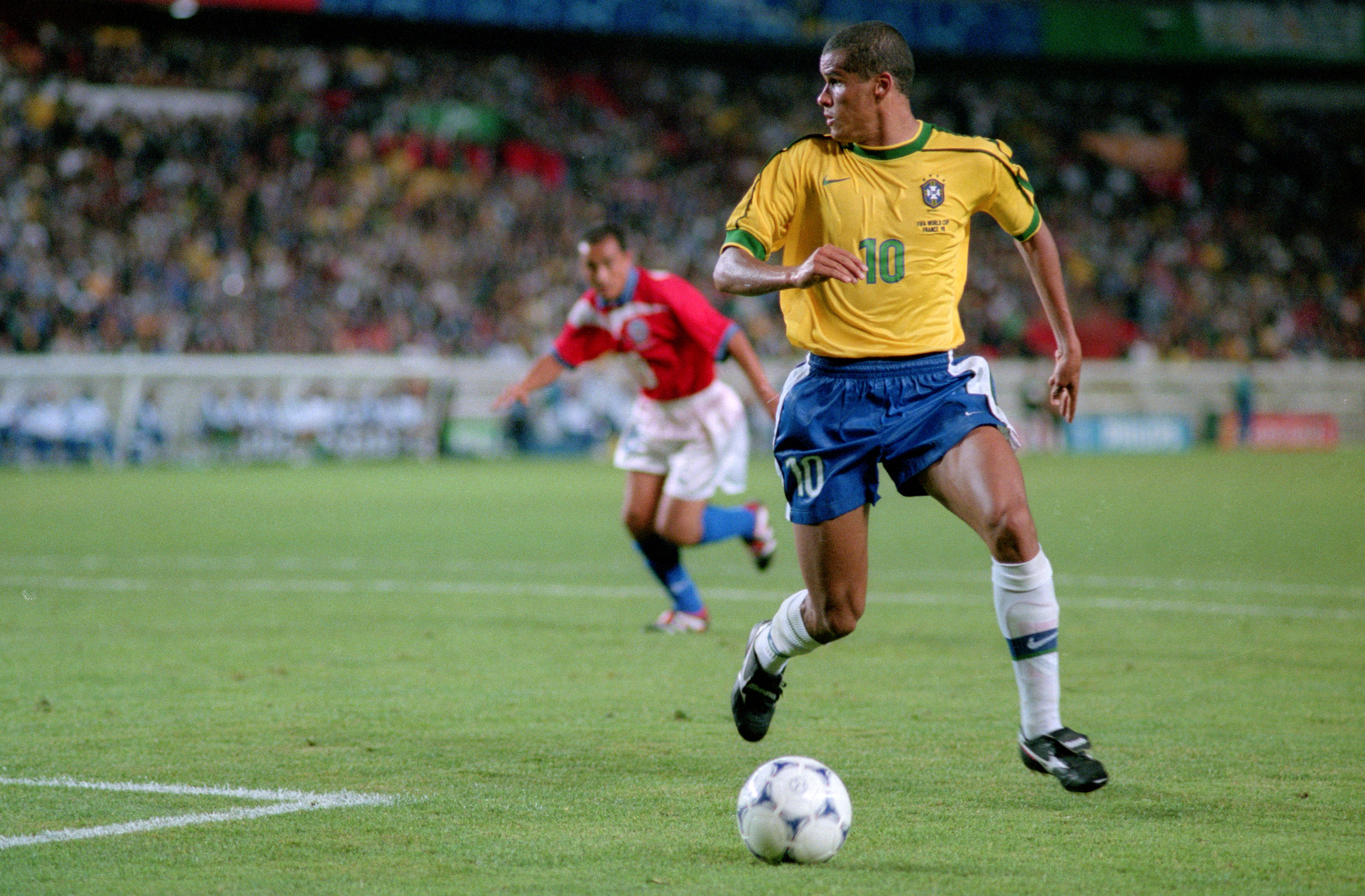
Rivaldo may not have had the charisma of compatriots Ronaldo or Ronaldinho, but the Brazilian was an unbelievable player at the end of the 1990s – and he could score from absolutely anywhere.
After helping Barcelona to back-to-back La Liga titles towards the end of the decade and winning the Copa America with Brazil in 1999, Rivaldo won the Ballon d'Or and was also named FIFA World Player of the Year. He is one of Brazil's all-time greats.
2. Lothar Matthaus

Lothar Matthaus captained West Germany at the 1990 World Cup and led by example, scoring four goals in some impressive displays from central midfield en route to the trophy.
Matthaus had been playing in Italy with Inter and later said it was like playing the World Cup at home. After Diego Maradona's decline, he was probably the world's best midfielder and carried on playing until 2000, returning to the international fold after a three-year hiatus mid-decade after impressing with Bayern Munich and finishing his career with 150 caps and 23 goals.
1. Zinedine Zidane
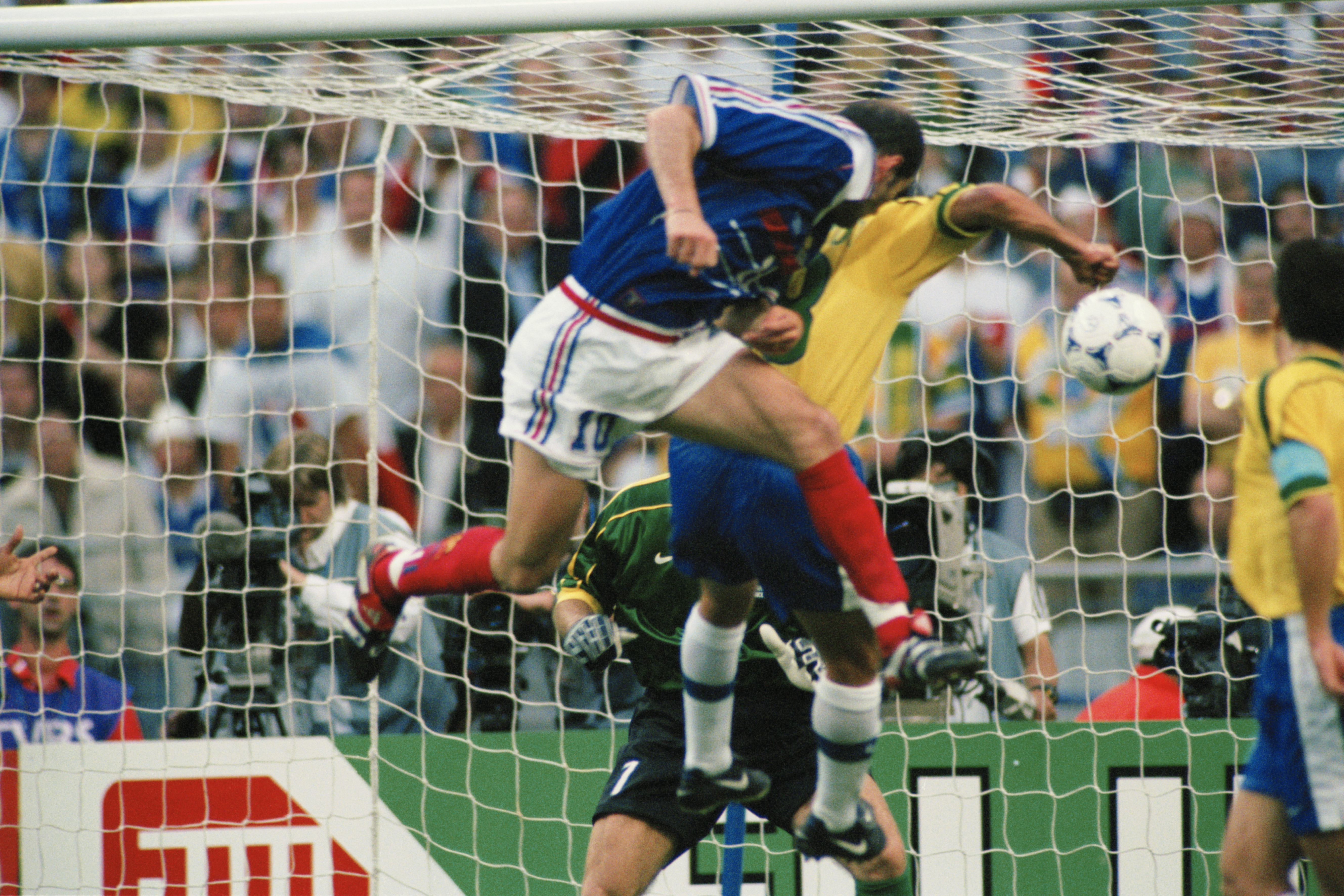
Zinedine Zidane was well known by the time the 1998 World Cup final came around, but he and France were not expected to win their showpiece clash against Brazil.
Zizou, as decisive as he was elegant, had other ideas. He beat Claudio Taffarel with two headers to set up an incredible win on home soil for Les Bleus. France followed that up by winning Euro 2000 as well, with Zidane at his brilliant best again. The move to Real Madrid came later, but with Juventus and France in the late 1990s, Zidane was already a world beater.







